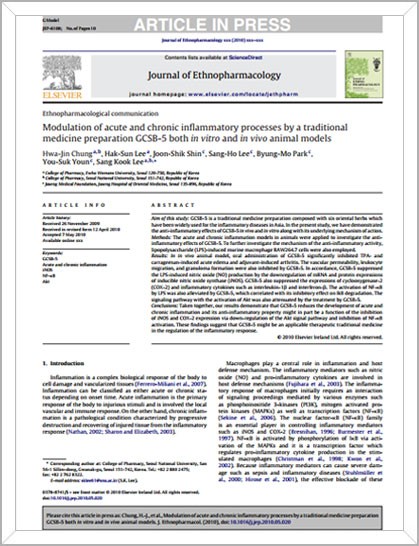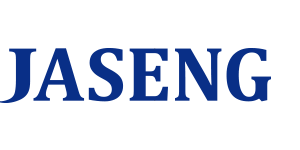Modulation of acute and chronic inflammatory processes by a traditional medicine preparation GCSB-5 both in vitro and in vivo animal models

AIM OF THIS STUDY:
GCSB-5 is a traditional medicine preparation composed with six oriental herbs which have been widely used for the inflammatory diseases in Asia. In the present study, we have demonstrated the anti-inflammatory effects of GCSB-5 in vivo and in vitro along with its underlying mechanism of action.
METHODS:
The acute and chronic inflammation models in animals were applied to investigate the anti-inflammatory effects of GCSB-5. To further investigate the mechanism of the anti-inflammatory activity, lipopolysaccharide (LPS)-induced murine macrophage RAW264.7 cells were also employed.
RESULTS:
In in vivo animal model, oral administration of GCSB-5 significantly inhibited TPA- and carrageenan-induced acute edema and adjuvant-induced arthritis. The vascular permeability, leukocyte migration, and granuloma formation were also inhibited by GCSB-5. In accordance, GCSB-5 suppressed the LPS-induced nitric oxide (NO) production by the downregulation of mRNA and protein expressions of inducible nitric oxide synthase (iNOS). GCSB-5 also suppressed the expressions of cyclooxygenase-2 (COX-2) and inflammatory cytokines such as interleukin-1beta and interferon-beta. The activation of NF-kappaB by LPS was also alleviated by GCSB-5, which correlated with its inhibitory effect on IkB degradation. The signaling pathway with the activation of Akt was also attenuated by the treatment by GCSB-5.
CONCLUSIONS:
Taken together, our results demonstrate that GCSB-5 reduces the development of acute and chronic inflammation and its anti-inflammatory property might in part be a function of the inhibition of iNOS and COX-2 expression via down-regulation of the Akt signal pathway and inhibition of NF-kappaB activation. These findings suggest that GCSB-5 might be an applicable therapeutic traditional medicine in the regulation of the inflammatory response.



